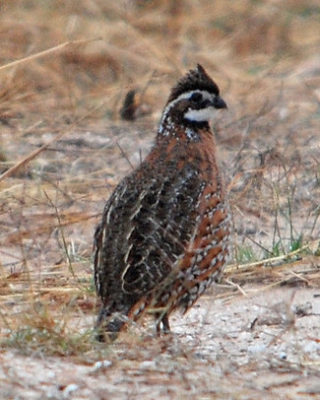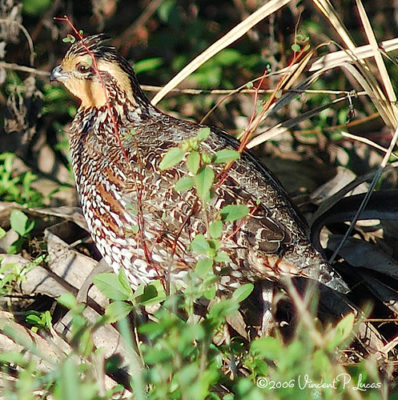Polk County’s Most Wanted – Northern Bobwhite
Have you seen Northern Bobwhite?
In a joint effort to expand the knowledge and understanding of the flora and fauna of Polk County, Conserving Carolina and botanist/ecologist David Campbell need your help in locating this month’s “Polk County’s Most Wanted—Animal,” the Northern Bobwhite (Colinus virginianus).
How do I identify the Northern Bobwhite?
The Northern Bobwhite is the only native quail in the eastern United States. These birds are often heard more than seen, with the male seemingly calling his name while he proclaims a whistled “Bob-WHITE!” Bobwhites are related to domestic turkeys and chickens. They are about 10 inches in length; about the size of a small, plump chicken walking upright on short legs. Both the male and female have body feathers that are a combination of brown, black, buff, and white. Males have a white line that runs above the eye and a white patch on the neck; a strong black band below the eye divides the two white patches.

Females are similarly colored but have a buffy colored throat patch and line above the eye. In both species, this coloring provides very effective camouflage.

Where should I look for Northern Bobwhite?
Bobwhites often keep to dense, low cover. Their favored habitats are brushy, open fields, farms, roadsides, and forest edges. They feed on or near the ground, and their preferred foods are small seeds, fruits, tender leaves, and insects. During the fall and winter, they live in coveys of about a dozen birds. At night, the covey roosts together on the ground and in circles with their tails pointed inward and heads pointed out.
Look for these unobtrusive birds on the ground and under or near vegetation. Often, they can be spotted pecking and scratching the earth in search of insects and other food; however, more than likely, you’ll spot them as they burst out of the vegetation in panicked flight if you get too close!
Northern Bobwhites were once a common species in eastern North America, but they have experienced widespread, sharp declines since the mid-1960s. Research indicates that the population decline is due to many factors, including habitat degradation and loss as a result of urbanization, fire suppression, and changes in agriculture and forestry practices.
What can you do?
If you think that you have seen (or heard) Northern Bobwhite in Polk County, please contact Pam Torlina at Conserving Carolina by email at [email protected].
For More Information
See more about “Polk County’s Most Wanted.” Download and print a “Pocket Guide” with all of the “Most Wanted” plants, animals, and habitats that you can be on the lookout for when you’re out in the field!
A Biological Inventory of Polk County
Now available for download: “An Inventory of the Significant Natural Areas of Polk County, North Carolina,” a culmination of David Campbell’s seven years in the field documenting the rare and significant flora and fauna in Polk County.
